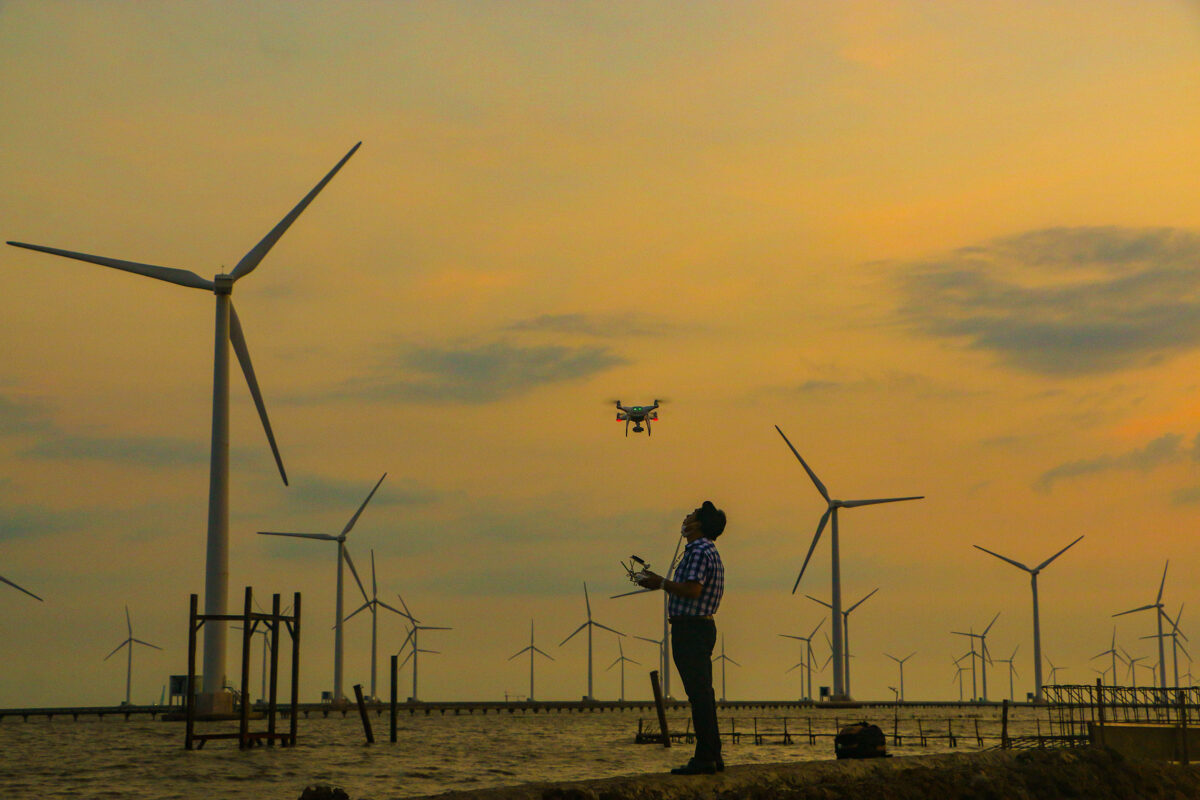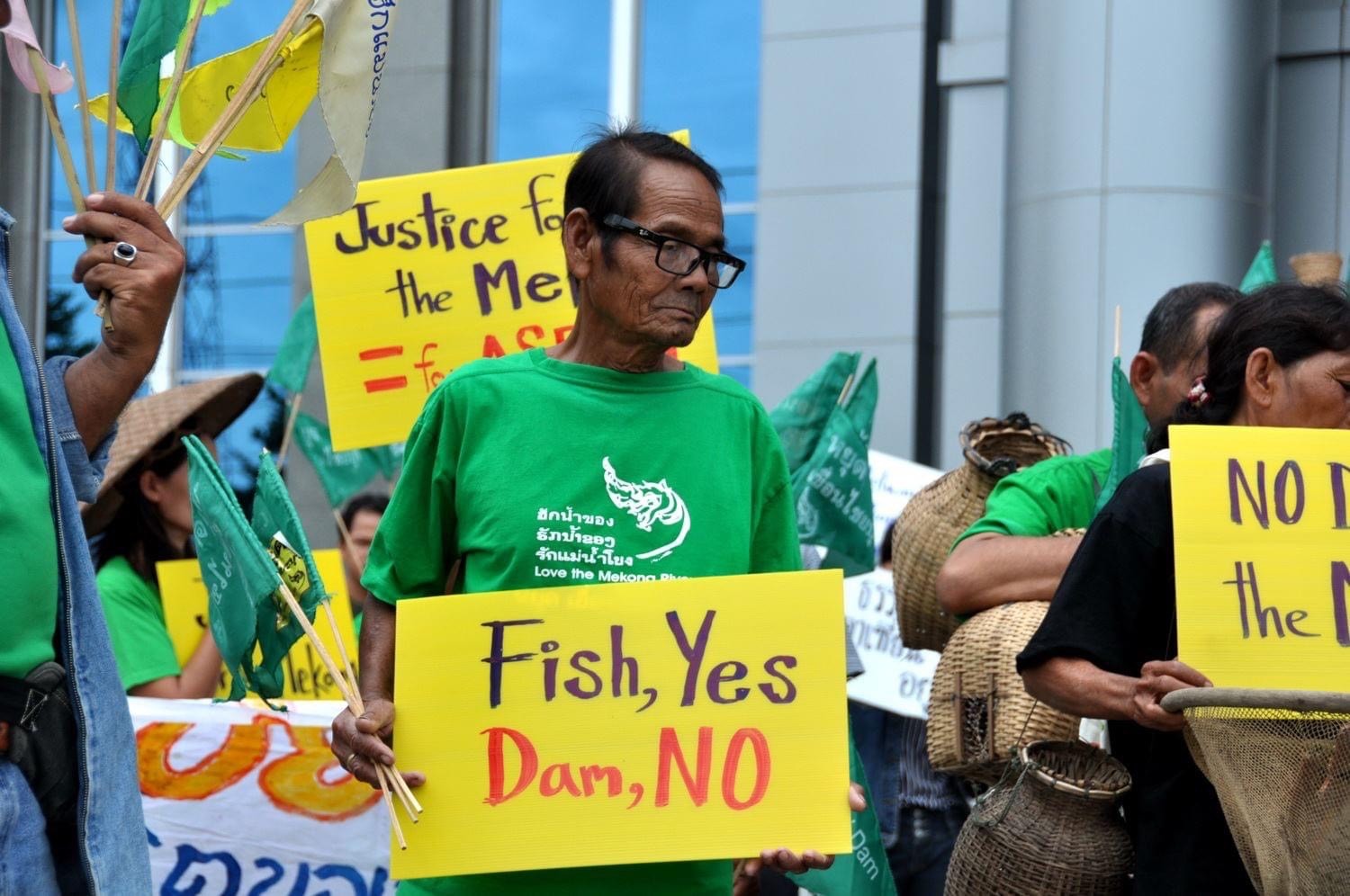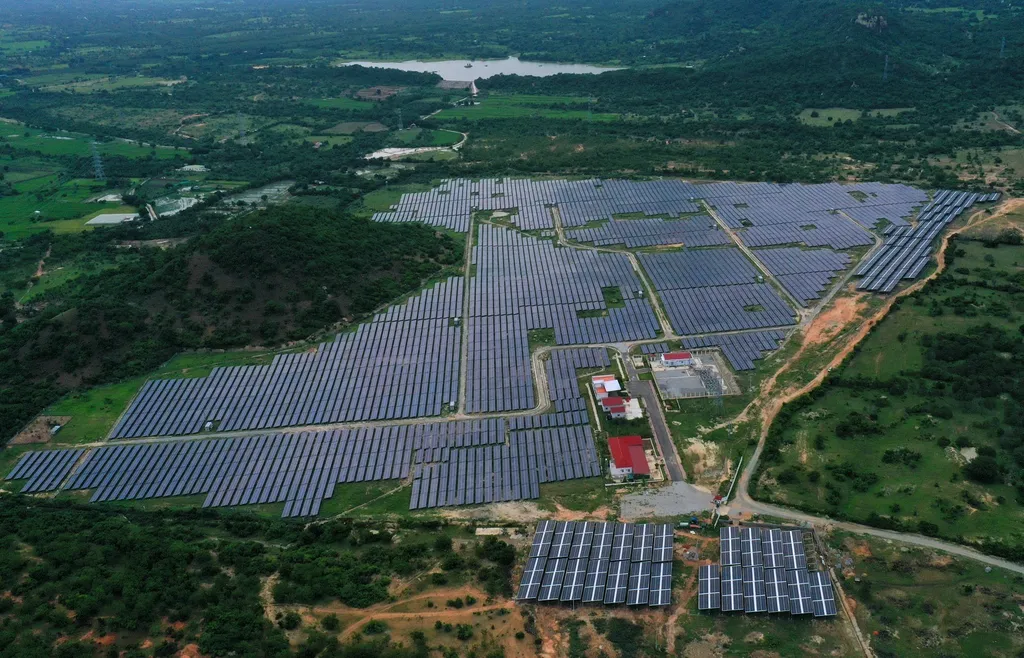Vietnam’s aim of becoming net-zero still a long way off as foreign investors battle bureaucracy and lack of incentives.
HANOI, VIETNAM – Tall wind turbines along the coast with their white rotor blades spinning have recently become the signature sight in Binh Thuan province in central Vietnam.
The strong wind that blows day and night there has helped to catapult this coastal province into Vietnam’s major hub of clean energy, with six wind power projects already completed, producing a total of 172 megawatts in capacity.
Recently, offshore wind has become the fastest growing clean energy segment, not only in this province, but also in many other parts of Vietnam.
“Vietnam has a wealth of natural resources to support the ongoing growth of the renewable energy industry,” said Stuart Livesey, the CEO of the La Gan Offshore Wind Farm Project planned for Binh Thuan.
Foreign investors are also eager to pour money into the sector, he said, given the rising demand for electricity spurred by rapid economic development, which makes Vietnam one of the most energy-thirsty countries in the region.
However, regulatory gaps, bureaucracy and an inadequate grid infrastructure remain the main barriers preventing Vietnam from attracting sufficient foreign investment to unlock its vast potential in renewable energy.
“While the majority of investment for energy transition is expected to be financed through domestic resources, the country needs support for this shift,” said Caitlin Wiesen, the UNDP Resident Representative in Vietnam.
The development of renewable energy requires large upfront investments, she said. Foreign direct investment and foreign companies will have a “critical role” to play in providing technologies, human and financial capital, she added.
According to the Stimson Center’s Mekong Infrastructure Tracker, nearly half of utility-scale solar and wind projects in Vietnam were developed entirely by foreign investors. Nearly one-fifth was co-sponsored by domestic investors and international partners, with only one-third developed entirely by domestic companies.
More than 90% of the foreign companies sponsoring solar and wind projects in Vietnam are from Asia, including Thailand, Japan and the Philippines. The rest is made up of companies from Norway, Canada, France, the United Kingdom and the United States.
Pre-pandemic boom in solar power
In the three years before the Covid-19 pandemic, Vietnam experienced some of world’s fastest growth in investment in solar power. The country surpassed Thailand in 2019 to have ASEAN’s greatest installed solar power capacity.
It skyrocketed from a mere 86 MW in 2018 to about 16,500 MW in 2020, far exceeding government targets.
The growth was driven primarily by attractive feed-in tariffs (FITs), a mechanism used to encourage developers by providing a guaranteed price for them over a period of time, boosting investor confidence.
FIT was launched in Vietnam in 2017. Under the first FIT plan, solar power projects starting operation prior to June 2019 could sell their electricity to the state-owned Vietnam Electricity (EVN) and its subsidiaries at a price of US$93.5 per MWh for 20 years. This was followed by a reduced, albeit still attractive, second FIT plan for solar projects and another FIT plan for wind projects, all of which have now expired.
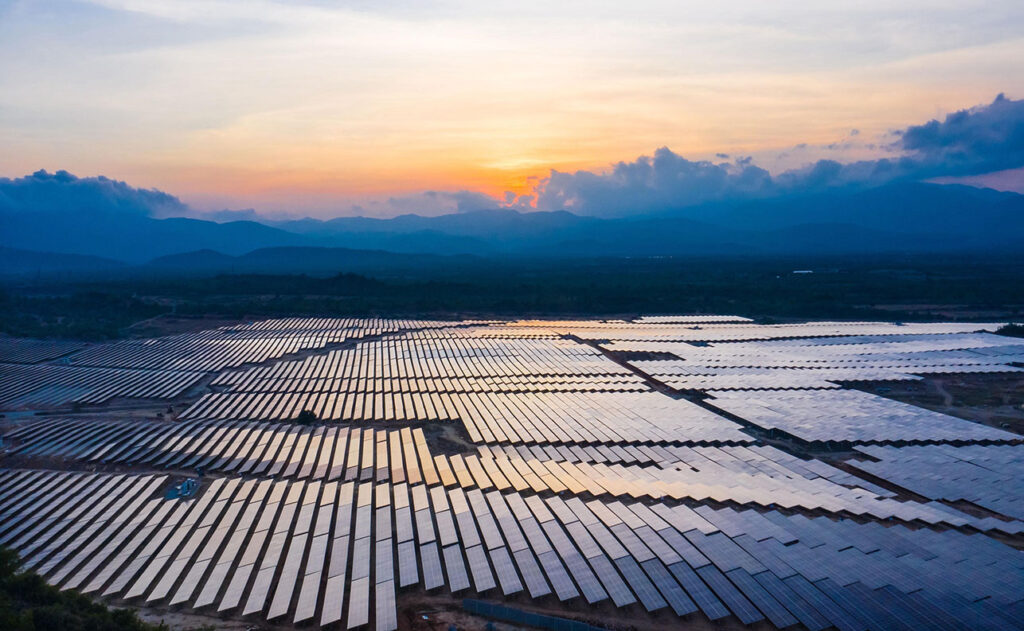
But Vietnam’s energy transition, which has slowed amid the supply chain crisis during the Covid-19 pandemic, now needs large-scale investment to deploy renewables.
Temporary increases in energy prices, due to the post-pandemic energy demand boom and the Russia-Ukraine conflict, may also slow the transition to renewable energy.
But it also offers an opportunity, according to Do Nam Thang, a research fellow at the Crawford School of Public Policy at the Australian National University.
“Fossil fuel consumption may increase temporarily but in the long run, increases in fossil fuel prices will speed up the transition from fossil fuel to renewable energy,” said Thang, who worked with the Ministry of Natural Resources and Environment for 20 years.
“Solar and wind technology costs have reduced remarkably in the last decade, and will continue to reduce.”
The pandemic’s supply chain woes that had seen massive delays in the shipment of goods due to clogged ports has also pushed the business community’s appetite for a green transition.
Consequently, “the post-pandemic period has been considered a chance to address this problem by re-building our world economy on a sustainable foundation,” said Alain Cany, Chairman of the European Chamber of Commerce in Vietnam (EuroCham). “This has contributed to a desire for a greener Vietnam.”
According to EuroCham’s first quarter of 2022 Business Climate Index (BCI), 82% of responding European business stakeholders are optimistic about Vietnam’s green potential.
To push the post-pandemic energy transition, the country will need to mobilize a large amount of financing – about $12-14 billion annually – according to World Bank calculations.
The Vietnamese government has signaled it is keen to transition into a greener economy too. At COP26 in Glasgow last year, Prime Minister Pham Minh Chinh pledged that Vietnam would achieve net-zero emissions by 2050.
The Southeast Asian country is well positioned in terms of natural resources for such a transition. A 3,000-kilometer coastline, strong winds and long hours of sunshine make Vietnam an attractive destination for solar and wind energy farms.
Institutional and infrastructure barriers
However, even if foreign investors are keen to pour money into Vietnam’s renewable energy projects, the absence of new FITs has created a policy gap. With no follow-up pricing mechanism, new solar and wind projects have no way to sell the power they generate.
“Vietnam’s unclear renewable energy policy with respect to feed-in tariffs is causing some frustration among investors and inhibiting Vietnam from achieving its full FDI potential at this time,” said the UNDP’s Wiesen.
The high off-take risk threatens investment in renewable energy projects and industry leaders suggest the implementation of a power purchasing agreement (PPA).
A PPA is a long-term contract under which a business purchases electricity directly from a renewable energy generator. PPAs provide financial certainty to the project developer, removing a significant roadblock to building new renewable facilities.
Livesey from the La Gan project said offshore wind farms require a huge amount of financial investment, so it needs a workable PPA to address grid curtailment, termination payments, a dispute forum and changes in law issues.
Wiesen also emphasized the deployment of direct PPA, or DPPA, an agreement made between a renewable energy generator and an end-user in which electricity is physically delivered to power the corporate buyer’s operations.
“These are currently being piloted and could have a significant impact if scaled,” she said. “The application of direct power purchase agreements would help trigger demand for renewable energy and stimulate renewable energy generation and investments.”
The demand from manufacturers is already there. Nike and Samsung have both hinted at their willingness to buy renewable energy through DPPAs as they aim to meet their global commitments to reduce greenhouse gas emissions and to green their supply chains and products.
“Foreign investors usually need transparency and stability in policy,” said Thang, the energy expert. “If there’s any hurdle, it would be not very attractive for them.”
But complex administrative procedures also hinder investment in renewable energy projects in Vietnam.
Research on policy options for offshore wind power in Vietnam authored by Thang and his colleagues showed the development of an offshore wind power project is subject to at least six laws and more than 20 regulations.
There are nine central agencies involved including the government office, ministry of industry and trade, ministry of natural resources and environment, ministry of defense, ministry of public security, ministry of transport, ministry of construction, ministry of planning and investment and ministry of agriculture and rural development, the paper said.
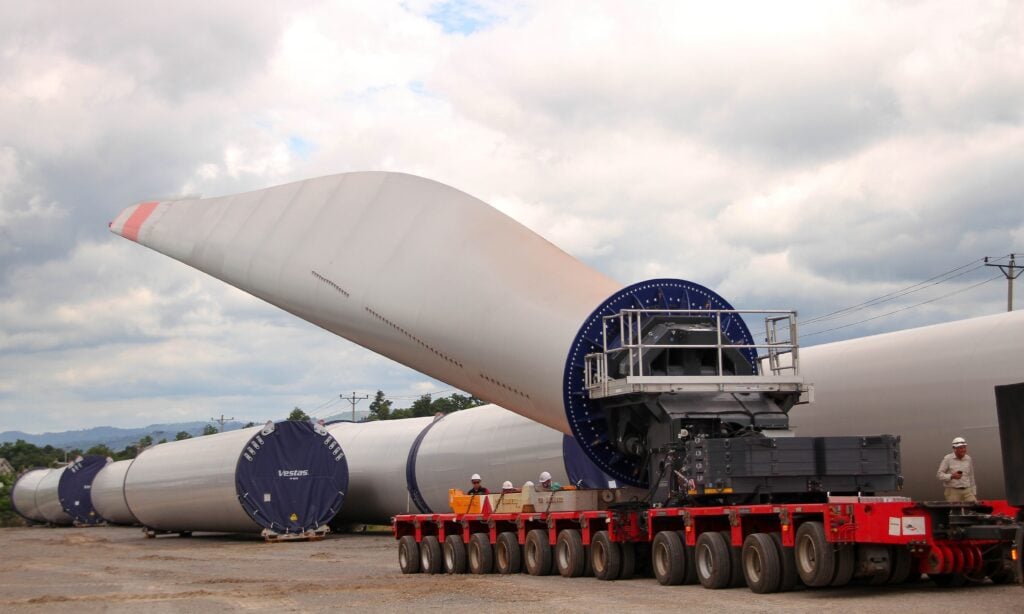
Alain Cany from EuroCham said the complex regulatory framework results in longer project timelines and lower investor confidence.
There are also technical challenges with the grid as the current transmission grid has insufficient capacity to cope with the spikes and fluctuations of renewable energy generated from solar and wind farms.
“Large investments in storage capacity of renewable energy are needed to store the surplus energy,” said Wiesen. “But so far, Vietnam does not have and has not yet invested in energy storage capacity. And that’s a key component.”
Early this year the Ministry of Industry and Trade had to stop adding new wind and solar power to this year’s national electricity supply and operation plan due to a lack of input facilities to transfer the power to the national grid.
Le Thi Thoa from the Rooftop Solar and Bioenergy Markets Projects under the GIZ Energy Support Programme said it is crucial to have a clear and transparent legal framework to remove bottlenecks and to create a stable and favorable investment environment for investors.
She also highlighted the need to strengthen investment in infrastructure to improve transport services, making Vietnam a more competitive market for foreign investors.
“Time is of the essence, and we do not have the time. We have a climate crisis now and it’s an urgency,” said Wiesen.
This story was produced with support from Internews’ Earth Journalism Network under the Green Recovery Grant. It was first published in Vietnam News. It’s been edited for length and clarity.


